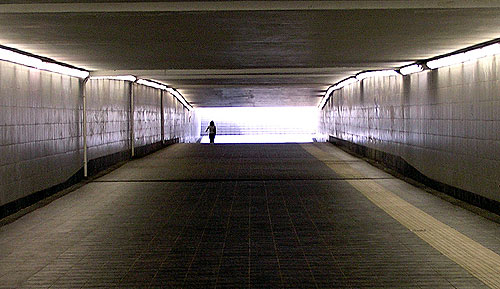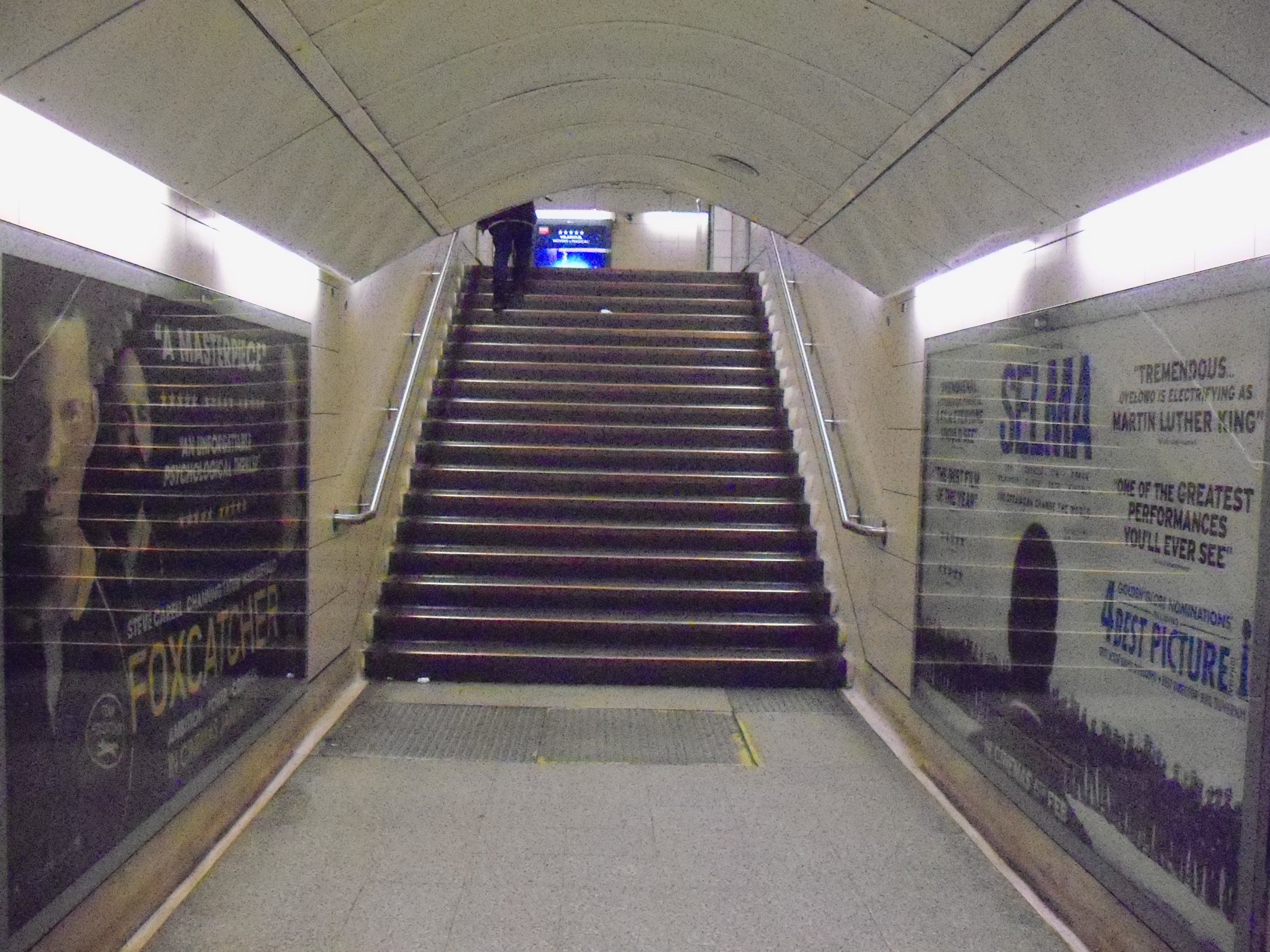Underpass construction
Contents |
[edit] Introduction
An underpass, or subway, is a tunnel containing a road or pedestrian passageway running underneath a road or railway. Underpasses can also be constructed to allow wildlife to pass safely under a transport corridor.
[edit] Construction methods
There are three main methods for constructing underpasses:
- Precast concrete units.
- In situ concrete.
- Thrust-bored units.
Precast concrete units are often manufactured as standard units and can be provided to site as complete box-like open-ended sections, portal frame segments, or as separate wall and roof units.
Box units are typically jointed using a pre-formed sealant strip in a socket and spigot joint. Connection plates in the floor and roof are used to bolt together the units.
Portal frame units, which are pre-stressed, require the lower waterproofing membrane to be placed on a concrete slab, with continuous concrete bearing pads (usually 300 mm wide x 25 mm deep) are laid on top. The units are then placed in position, with lubrication applied to reduce stress-induced friction.
Wall and roof unit systems comprise precast units that are placed in position with the floor laid in situ using the units as shuttering. The roof units are then placed and the in situ loading slab poured, with loading requirements determining the thickness.
Thrust-bored units require a suspension of bentonite as lubrication. As a means of transmitting the thrust load, the units must have direct edge contact rather than the pre-formed sealing strip. This jointing method should allow edge contact for jacking, but be capable of receiving a sealing compound from the inner face. This is possible by forming a rebated joint filled with mortar prior to applying the sealant.
In situ concrete underpasses are constructed using the same methods as any underground tunneling construction.
[edit] Waterproofing
Waterproofing underpasses is commonly achieved by applying one of the following:
Two coats of mastic asphalt should be laid, with joints staggered at least 150 mm. Bituminous sheeting should be applied in 2-3 layers, with hot bitumen fully bedding each layer. A self-adhesive bituminous polythene can be used and have the advantage of being easier and quicker to lie in place.
Once in place, the waterproof membrane must be protected by constructing a concrete-block skin against the membrane before backfilling with granular material. This helps to avoid the membrane being punctured.
[edit] Lighting and drainage
To try and avoid vandalism occurring, underpass lighting should be made using toughened glass and recessed into the walls or roof units.
The locality and use of the underpass will determine the finishes. Urban underpasses are often painted in bright colours or to suit the finish of its immediate surroundings, using mosaics, tiling and rendering. For underpasses where aesthetics are not as important, a plain concrete finish will often be chosen.
Drainage comprises normal falls, screeded floor and gullies or continuous side channels which will flow into a storm sewer as and when required.
[edit] Find out more
[edit] Related articles on Designing Buildings Wiki
Featured articles and news
RTPI leader to become new CIOB Chief Executive Officer
Dr Victoria Hills MRTPI, FICE to take over after Caroline Gumble’s departure.
Social and affordable housing, a long term plan for delivery
The “Delivering a Decade of Renewal for Social and Affordable Housing” strategy sets out future path.
A change to adoptive architecture
Effects of global weather warming on architectural detailing, material choice and human interaction.
The proposed publicly owned and backed subsidiary of Homes England, to facilitate new homes.
How big is the problem and what can we do to mitigate the effects?
Overheating guidance and tools for building designers
A number of cool guides to help with the heat.
The UK's Modern Industrial Strategy: A 10 year plan
Previous consultation criticism, current key elements and general support with some persisting reservations.
Building Safety Regulator reforms
New roles, new staff and a new fast track service pave the way for a single construction regulator.
Architectural Technologist CPDs and Communications
CIAT CPD… and how you can do it!
Cooling centres and cool spaces
Managing extreme heat in cities by directing the public to places for heat stress relief and water sources.
Winter gardens: A brief history and warm variations
Extending the season with glass in different forms and terms.
Restoring Great Yarmouth's Winter Gardens
Transforming one of the least sustainable constructions imaginable.
Construction Skills Mission Board launch sector drive
Newly formed government and industry collaboration set strategy for recruiting an additional 100,000 construction workers a year.
New Architects Code comes into effect in September 2025
ARB Architects Code of Conduct and Practice available with ongoing consultation regarding guidance.
Welsh Skills Body (Medr) launches ambitious plan
The new skills body brings together funding and regulation of tertiary education and research for the devolved nation.
Paul Gandy FCIOB announced as next CIOB President
Former Tilbury Douglas CEO takes helm.
UK Infrastructure: A 10 Year Strategy. In brief with reactions
With the National Infrastructure and Service Transformation Authority (NISTA).
























